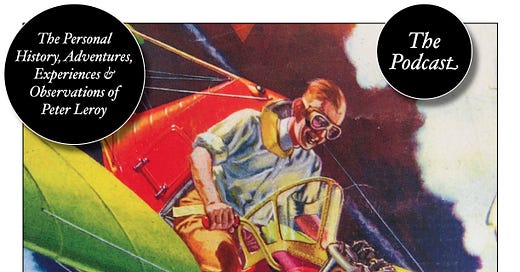2
IF “LODKOCHNIKOV” was an embarrassment for her, “Ariane” sometimes felt like a curse. When—in junior high school—she found out where the name came from, she could hardly believe that her mother would give her such a name, a name so rich in implications for a life. Ariane made her discovery in Mrs. Fendreffer’s class, in the pages of Ancient Myths for Modern Youth, the book with the indigo cover that turned the hands of generations of Babbington youth blue:
The Sad Tale of Ariadne, Stranded on Naxos Without a Clue
Minos, the King of Crete, son of Zeus and Europa, grandson of the great Minos the Lawgiver (though some say it was otherwise, and the old myths are full of holes and contradictions, so no one can say for sure), boasted that he could obtain anything by praying for it. (We still hear this sort of thing nowadays, when people say that “God will provide.”) A skeptical Cretan challenged this boast of Minos’s, so Minos prayed to Neptune to send him a bull. (This may seem like an odd request from someone who boasted that he could get anything, but the ancients had many strange ideas about the relative value of things, and Minos apparently hadn’t heard the old saying “Be careful what you wish for because you may get it.”)
Neptune sent Minos a bull, as Minos had asked, but, as was the wont of the gods, he added a twist: the bull was so beautiful that Minos couldn’t bring himself to sacrifice it to Neptune, as he should have, according to the custom of the times and the implied contractual arrangement between Minos and Neptune.
Neptune was furious. He racked his brain for a way to show Minos who was boss and soon came up with a humdinger. He caused Minos’s wife Pasiphaë (pass-if-AH-ee) to fall in love with the bull, and he made the bull return her ardor. (This sounds strange to us, since we don’t hear about this sort of attachment much in modern times, but we mustn’t forget that in rural areas farmers have been known to develop deep affection for their sheep.)
Pasiphaë gave birth to a monster, a beast with the head of a bull and the body of a man, a beast that came to be called the Minotaur. (The name is a combination of Minos and tauros, the Greek word for “bull,” so it can be interpreted as “Minos’s bull.” The myths are mute on the subject of who named the beast. If Pasiphaë did, she may have been using the power of naming to get some little revenge. If Neptune caused the bull to be so named, he may have been thumbing his divine nose at Minos, saying, in effect, “You wanted a bull, pal, and you got it.”)
No one was happy with this result, as you can imagine. The Minotaur must have felt like an outcast, disdained as a freak of nature by both bovine and human society. It roamed Crete, terrorizing everyone, until Minos ordered Daedalus to build a house—or prison—for the beast. Taking the inspiration for his design from the river Meander (you could look it up), Daedalus built the Labyrinth, a structure that was all passageways, with so many twistings and turnings that once inside no one, man or Minotaur, could find his way out. (Some of us think life’s like that, don’t we?)
Meanwhile, Minos had conquered Athens, and he began trying to placate the Minotaur by feeding it a diet of Athenian youths and maidens, a practice that made the Athenians grouse and grumble. One day, the dashing Theseus, son of Aegeus, king of Athens, vowed to slay the beast and end the awful tribute paid to it. With that aim in mind, Theseus volunteered to be among the youths tossed to the Minotaur. When Theseus arrived on Crete in a shipment of sacrificial Minotaur feed, Ariadne, the elder daughter of Minos and Pasiphaë, espied the handsome lad and immediately fell in love with him, and Theseus in turn fell in love with her (or at least he seemed to fall in love with her—read on).
To aid Theseus, Ariadne gave him some thread to string behind him as he entered the Labyrinth so that he could follow it out again. (How much thread did she give him? She gave him a whole ball of it, or, in Old English, a clewe of thread. From this association with the myth, the word clewe developed the metaphorical meaning that we assign to it now, with its modern spelling, clue, and meaning, “something that helps solve a puzzle.”) Theseus entered the Labyrinth, trailing the thread behind him, slew the Minotaur, followed the thread out of the Labyrinth, and ran off with Ariadne, the apple of her miserable mother’s eye.
On the way home to Athens, Theseus and Ariadne stopped at Naxos, and there Theseus deserted her while she slept. (Theseus seems to have had an attitude of “Hey, this whole Cretan business was just a job, you know, something temporary, an episode, not my destiny!” He also seems to have had a hard time keeping his hands off young women. Later in life, with a friend as accomplice, he kidnapped a beautiful child—Helen, who later attained fame as the cause of the Trojan War. Still later, he courted and married Ariadne’s younger sister, Phaedra. How do you like that guy! Geez, Louise! Phaedra wound up hanging herself—but that’s another story.) Ariadne was miserable, of course, when she woke up and saw Theseus sailing off, leaving her stranded, but she eventually found happiness in the arms of Dionysus, which shows us that even in ancient times people who told stories knew the value of giving them unexpected twists and turns, of meandering, of making labyrinthine plots.Discussion Questions
1. How the heck do you suppose they got the Minotaur into the Labyrinth?
2. (optional, extra credit) Do you think that the whole Labyrinth business is an elaborate sexual metaphor? I mean, think about it, girls. Isn’t this what boys are afraid of? Getting in and not being able to get out? Siring something. Confronting a monster at the heart of Woman?
[to be continued]
Have you missed an episode or two or several?
You can begin reading at the beginning or you can catch up by visiting the archive or consulting the index to the Topical Guide. The Substack serialization of Little Follies begins here; Herb ’n’ Lorna begins here; Reservations Recommended begins here; Where Do You Stop? begins here.
You can listen to the episodes on the Personal History podcast. Begin at the beginning or scroll through the episodes to find what you’ve missed. The Substack podcast reading of Little Follies begins here; Herb ’n’ Lorna begins here; Reservations Recommended begins here; Where Do You Stop? begins here.
You can listen to “My Mother Takes a Tumble” and “Do Clams Bite?” complete and uninterrupted as audiobooks through YouTube.
You can ensure that you never miss a future issue by getting a free subscription. (You can help support the work by choosing a paid subscription instead.)
At Apple Books you can download free eBooks of Little Follies, Herb ’n’ Lorna, Reservations Recommended, and Where Do You Stop?
You’ll find overviews of the entire work in An Introduction to The Personal History, Adventures, Experiences & Observations of Peter Leroy (a pdf document), The Origin Story (here on substack), Between the Lines (a video, here on Substack), and at Encyclopedia.com.














Share this post